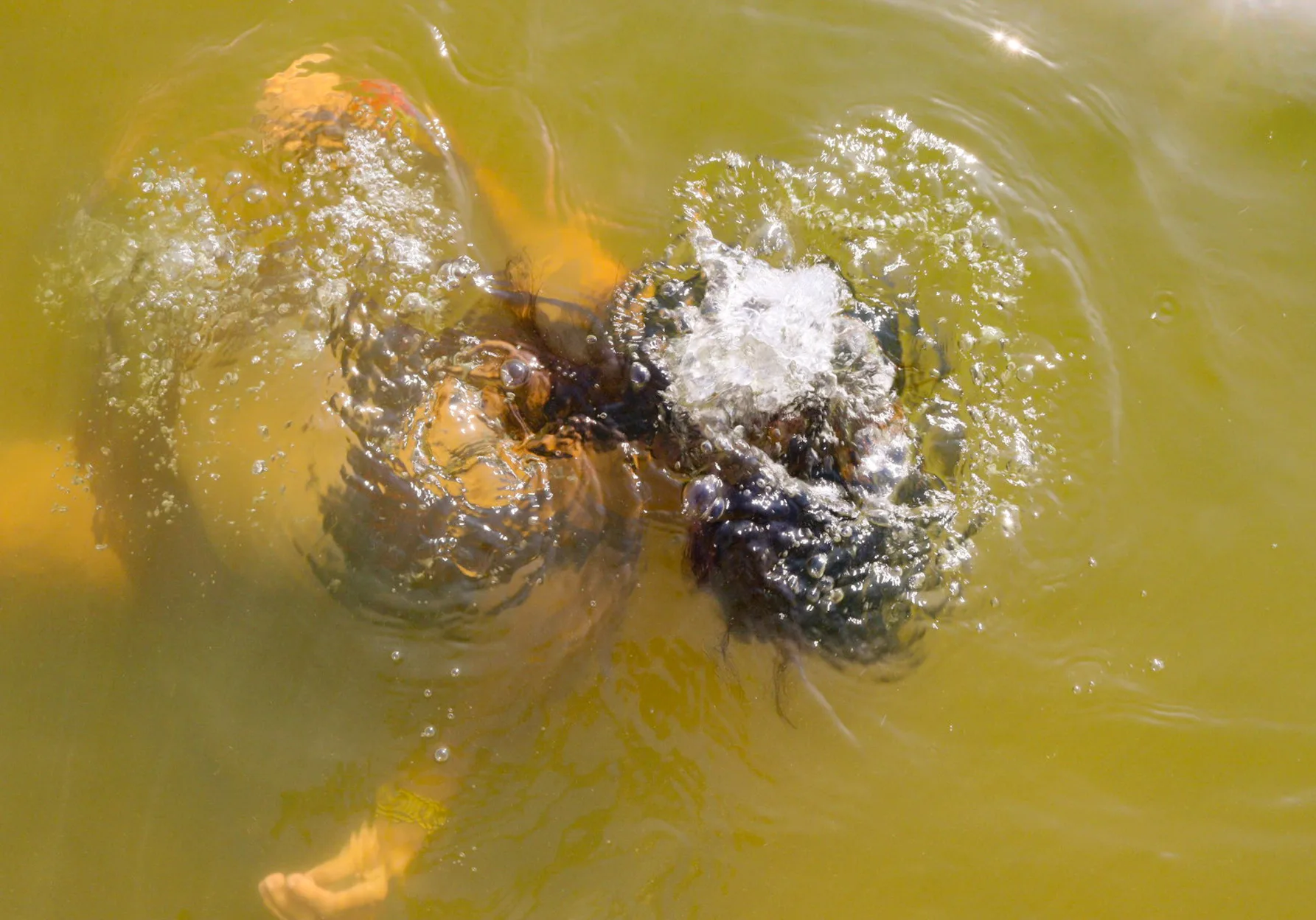A worsening climate and the destruction of nature are connected but treated separately at parallel global events that dialog very little with each other, hindering an effective response to the world’s polycrisisIn recent months, the Amazon and Pantanal have faced their most severe fires in two decades. Many stretches of rivers like the Xingu and Iriri have run dry, and the Negro River, in the state of Amazonas, hit its lowest level in the last 122 years. Entire biomes have been intensely affected by climate change. In practice, this means we are seeing animals, trees, plants, fungi, and countless other more-than-human beings burned, dying of thirst, or failing to adapt to changed habitats. These deaths, in turn, diminish Nature’s capacity to work to regulate the climate and minimize the impacts of human action on the planet. There is a direct relationship between climate and the destruction of Nature. The hotter it is, the more fires there are and the more trees die, and this decreases the forests’ capacity to remove pollutant gasses from the atmosphere – and the temperature rises higher. It is a circle formed by two topics that are firmly connected, but treated separately by international diplomacy, as if there were no link between them. Climate is the theme of the climate COP. Nature is the theme of the biodiversity COP. The two UN meetings have different goals and plans, with little interaction between them, which hinders an effective response to the emergency we are experiencing.
In the run-up to both conferences – the COP-16 on biodiversity begins October 21, in Cali (Colombia), while the COP-29 Climate Conference kicks off on November 11, in Baku (Azerbaijan) – SUMAÚMA spoke with researchers studying the subject to understand why these COPs are held separately and what the implications are for life on Earth.
Scientists from various parts of the world have for some decades now been calling attention to this connection between nature and climate, which is becoming increasingly clear as the Earth warms, species are impacted, and the planet is losing its natural ability to regulate the climate. “For decades the scientific community has been pressing for joint discussion of the climate crisis and biodiversity loss at the political level, warning that one challenge cannot be resolved without simultaneously tackling the causes of the other. Yet many countries are still reluctant to join these two agendas, and this has further delayed the search for solutions,” says researcher Carlos Alfredo Joly, a professor at the State University of Campinas and a member of the Brazilian Platform on Biodiversity and Ecosystem Services.
According to Joly, under the auspices of international legal regimes, the origin of the split between these areas lies in how intergovernmental environmental agencies were structured. In 1992, when Rio de Janeiro hosted the United Nations Conference on Environment and Development (the Rio-92 Earth Summit), two specific mechanisms were instituted for dealing with these topics: climate change would be handled under the auspices of the United Nations Framework Convention on Climate Change, while biodiversity would fall under the auspices of the Convention on Biological Diversity. Each framework convention also began to gather their own specialists, with their own methodologies and concepts.
Thelma Krug, a former vice president of the Intergovernmental Panel on Climate Change and a retired senior researcher at the National Institute for Space Research, reiterates that when the framework conventions were instituted, their texts contained no mention of the explicit relationship between climate and biodiversity. Furthermore, four years before the Rio-92 Earth Summit, the United Nations Environment Programme had, along with the World Meteorological Organization, created the Intergovernmental Panel on Climate Change, a committee comprised of hundreds of scientists from around the world, who began to periodically assess scientific knowledge on the topic and publish reports to back policy decisions on the planet’s warming. “Note that at that time there was no equivalent to the Intergovernmental Panel on Climate Change for biodiversity, so policies on these topics naturally evolved at different paces. The UN’s Intergovernmental Science-Policy Platform on Biodiversity and Ecosystem Services, which began to play a similar role, was only created in 2012,” Joly explains.
Major international commitments also progressed at different rates. In 2015, the Paris Agreement was signed under the legal climate regime, wherein 194 countries and the European Union committed to keeping global heating at well below 2 degrees Celsius in relation to pre-industrial levels, with efforts to limit a rise to 1.5 degrees. In the meantime, the Kunming-Montreal Global Biodiversity Framework, which would be an equivalent agreement for biodiversity, was only signed in 2022, after 196 nations agreed, among other things, to ensure that at least 30% of the world’s land and ocean areas would be conserved and restored by 2030. What concerns many researchers, however, is that the lack of a more integrated view of these commitments hinders fulfillment of both agreements.
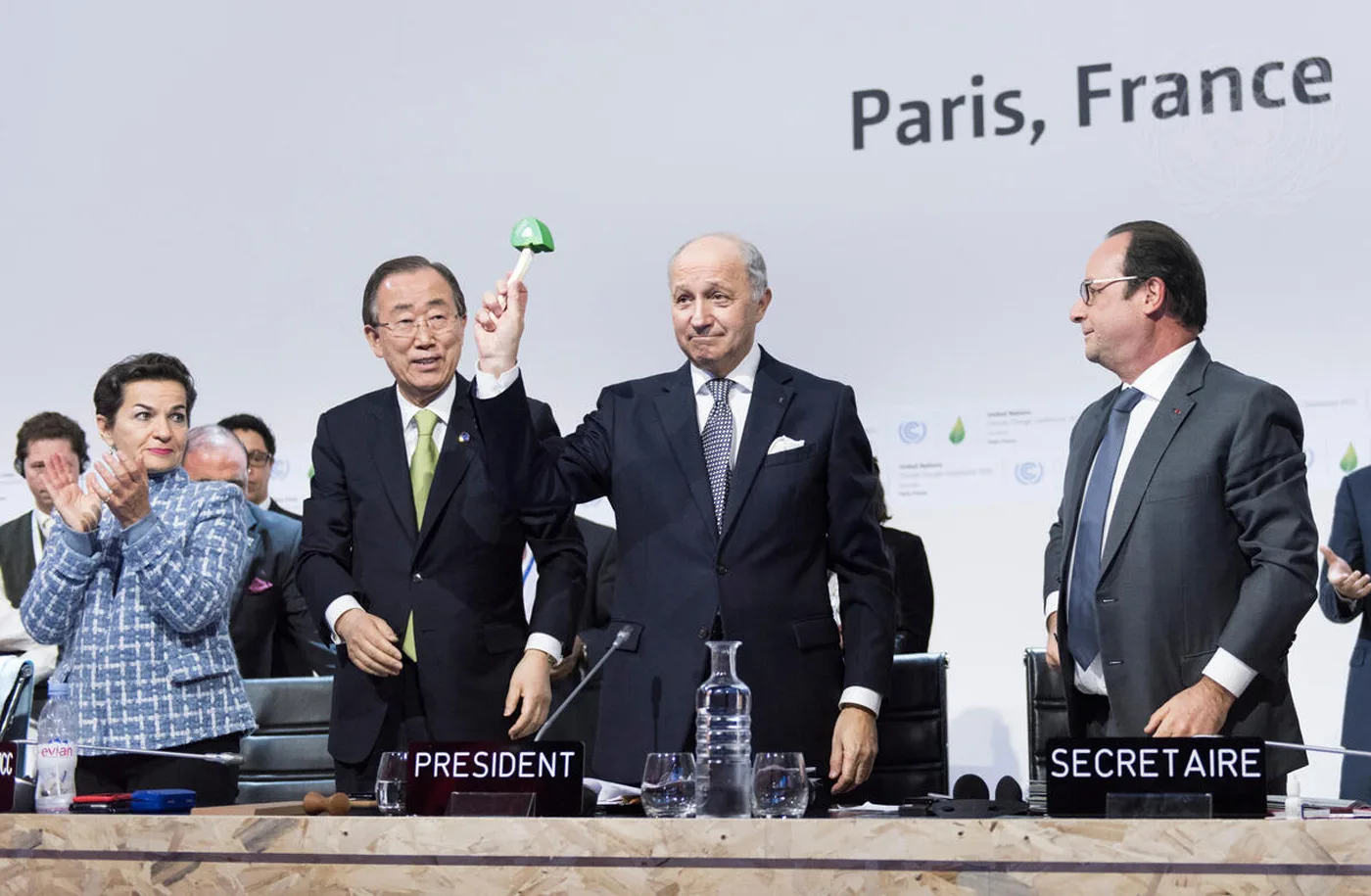
The Paris Agreement, signed in 2015 by 194 countries and the European Union, set a goal to limit the rise in global temperature to 1.5 degrees Celsius. Photo: UN/Mark Garten
Science advances quickly
Thelma Krug says the way the press has communicated these topics has weakened public perceptions of their connectedness. “Climate urgency is, in my opinion, communicated much better in the media, because of an understanding that the rise in the average surface temperature, prolonged droughts, heat waves, and floods have a direct impact on the human system. Yet how the loss in biodiversity affects the climate system, including the water cycle, has been explored much less. A failure to understand the inseparable nature between climate, biodiversity, quality of life, and sustainable development means continuing to separately seek solutions to each topic, without recognizing the inevitable feedback,” she explains.
Science has been thoroughly detailing this relationship for quite some time now. A study published in 2022 by Global Change Biology contained a review of research from the last two decades that showed how conservation actions that interrupt, slow, or reverse biodiversity loss have the potential to at the same time significantly decelerate climate changes caused by human action. Reduced deforestation and the restoration of ecosystems (especially those capable of absorbing more carbon, like forests and mangroves) are among the conservation actions with the most potential to mitigate the rise in global temperature, the study indicates. “The close interlinkages between biodiversity [and] climate change mitigation (…) are seldom as integrated as they should be in management and policy,” warn the study’s authors.
Similar conclusions were published in 2024 in the journal BioScience, in a paper authored by Brazilian and American researchers that detailed six key points where biodiversity conservation can contribute to mitigating climate change: conservation of natural environments, which are carbon stocks and sinks; appropriate restoration of degraded areas; integrated conservation of local fauna and flora; increasing productivity instead of expanding agriculture areas; incorporation of biodiversity into business models; and joining the Biodiversity and Climate COPs. The authors discuss, for example, how commitments undertaken by countries that signed the Paris Agreement to eliminate net greenhouse gas emissions in the first half of the century will likely fail if biodiversity issues are not fully integrated into the international climate agenda. “In this sense, the integration of environmental conferences would increase synergies between multilateral environmental agreements and international institutions. This would foster collaboration between experts on related topics, aligning methods and models and leading to a better assessment of trade-offs and interactions between different types of environmental impacts and policies,” the paper says. The UN currently classifies biodiversity as the “strongest natural defense against climate change.”
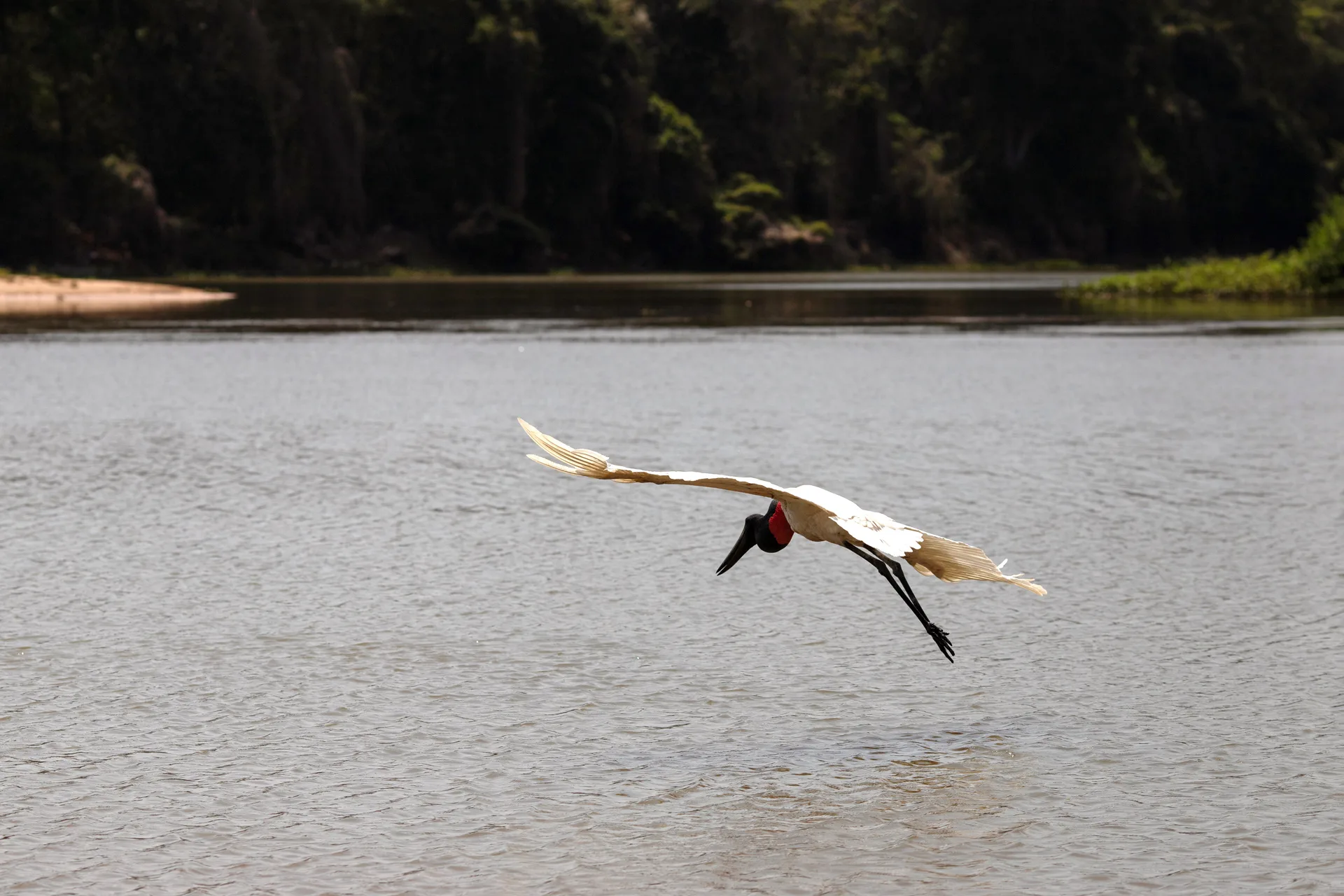
While climate change is affecting nature, the destruction of forests gives these ecosystems less capacity to regulate climate. Photo: Ahmad Jarrah/SUMAÚMA
Political confluence at a snail’s pace
Although the political arena is slow to grasp the connection between these areas, researchers have found encouragement in some of the advances in recent years. Krug explains, for instance, that science has taken steps toward showing the relationship between climate and biodiversity, which has gained recognition from the Intergovernmental Panel on Climate Change. “The first Intergovernmental Panel on Climate Change report, issued in 1990, makes very quick mention that a ‘rapid change in climate may not allow species to adapt and, thus, biodiversity could be reduced,’” the researcher points out. By contrast, in the committee’s sixth and most recent Assessment Report (AR6), released in 2023, there is a broader description of how global heating impacts biodiversity, including a projection that if the temperature increases by 2 degrees Celsius by 2100, it could mean up to 18% of all species on Earth would be at high risk for extinction; that measures are needed to adapt, preventing a substantial decline in biodiversity, such as expanding fully-protected areas as well as restoration and sustainable land use practices; and that in oceanic and coastal ecosystems, the risk of biodiversity loss ranges from moderate (global heating of 1.5 degrees Celsius) to very high (2 degrees Celsius).
According to Maria Gasalla, a professor at the Oceanographic Institute at the University of São Paulo, one of the hallmarks of this process of connection between these areas was the 2021 publication of a joint report on biodiversity and climate change by the Intergovernmental Panel on Climate Change and the UN’s Intergovernmental Science-Policy Platform on Biodiversity and Ecosystem Services.
The result of a workshop held over four days with 50 of the world’s top experts on these two topics, the document looked at the connection between protecting biodiversity and mitigating and adapting to climate change. Its main conclusion was that unprecedented changes to the climate and biodiversity have combined and have placed life in its most varied forms, along with the well-being of the world’s population, under greater threat. The only way to stop these changes, the document explains, is through a joint approach. The report also showed how actions focused solely on combating climate change can cause direct and indirect harm to nature if they do not consider the characteristics of biomes, for instance.
One example is large-scale tree planting projects, where reforestation is often done using monocultures whose goal is to bolster sequestration of carbon, a gas that helps warm the atmosphere; yet these projects are frequently harmful to biodiversity, especially when they use tree species that are exotic to the region. According to the document, many scenarios that had considered these practices and that had until then been used by the Intergovernmental Panel on Climate Change failed to differentiate between natural regeneration of forests, reforestation through planting, and forestation of areas not previously covered by trees, which hampered assessment of the impacts on biodiversity.
Gasalla notes there are now more efforts to bring these areas closer, like the joint statement by various countries on climate, nature, and people, published during the United United Nations Climate Conference (COP-28) held in late 2023, in Dubai, in the United Arab Emirates, which established paths to coordinated actions and highlighted the importance of an alliance between the Paris Agreement and the Kunming-Montreal Global Biodiversity Framework. A few months later, in January 2024, a statement of intention was made by the secretariats of the United Nations Framework Convention on Climate Change and the Convention on Biological Diversity, proposing, among other things, more financing for climate and nature, and more exchange among sources and collection of data, metrics, and methodologies.
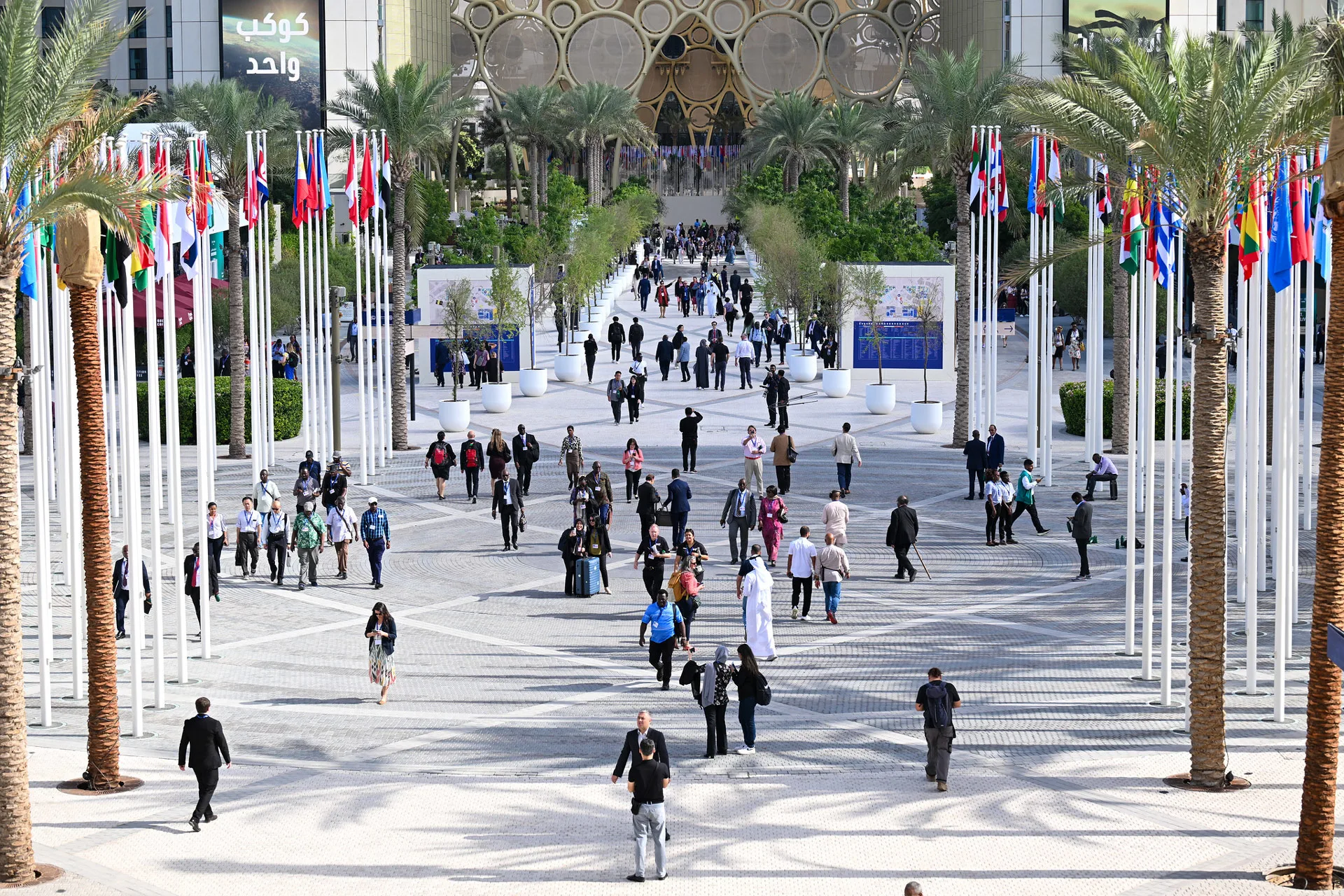
A document signed at COP-28, held in 2023 in the United Arab Emirates, proposed coordinated actions geared toward the climate and biodiversity. Photo: Anthony Fleyhan/COP-28
Civil society entities like the Colombian think tank Transforma, which focuses on promoting climate action, understand this is a strategic moment for taking the next steps, since the signatory countries to the Kunming-Montreal Global Biodiversity Framework are creating their new National Biodiversity Strategies and Action Plans, to be submitted during COP-16, while the countries that signed the Paris Agreement have until February 2025 to give the United Nations Framework Convention on Climate Change and the Convention on Biological Diversity their new versions of their Nationally Determined Contributions, which represent each country’s goals for attaining alignment with the climate agreement. In a recently released document of recommendations, the institution argues the COP-16, being held in October in Colombia, could be the first chance to extend a formal invitation to the Parties to revise their national action plans on both climate and biodiversity in a coordinated and collaborative way.
The think tank also points out that another strategy with the potential to be effective at moving the agendas closer together is greater collaboration between the UN’s Intergovernmental Science-Policy Platform on Biodiversity and Ecosystem Services and the Intergovernmental Panel on Climate Change, which has mostly been happening informally. One way to foster this collaboration, according to the institute, would be to invite joint work on the final COP-16 text between the Intergovernmental Science-Policy Platform on Biodiversity and Ecosystem Services and the Intergovernmental Panel on Climate Change.
Based on these and other proposals being passed around in the lead up to leaders’ next meetings, there are modest expectations for the upcoming UN conferences: “I think if the president of the COP-16 maintains an integrating policy, that is, advises that all interventions reflect and consider the climate-biodiversity nexus, we can have important advances in solutions as well as in negotiations,” says Gasalla. Bráulio Dias, who holds a PhD in zoology, is currently the director of the Department of Biodiversity Conservation and Sustainable Use at the Environment Ministry, and is a member of the government delegation that will be at COP-16, recognizes the need for greater cooperation on these issues, but he explains that the government is already working internally on an interconnection between these agendas in both the Climate Plan and the National Biodiversity Strategy and Action Plans, a document that should be presented in Colombia in November. He says the climate-biodiversity relationship should be subject to two more decisions to be adopted at COP-16. “But the drafts of these decisions are full brackets, indicating how hard it is for us to reach consensus,” he says, summing up the situation.
It is yet to be seen whether the coming conferences will bring significant advances or if the chance for greater connection between the agendas will be pushed to 2025, when the world’s most biodiverse country, Brazil, will host COP-30, the thirtieth edition of the world’s climate conference. Regardless of how fast the connection between the agendas advances, what has invariably become clearer for researchers, leaders, and society at large is that the mentality that created the climate crisis is not the same mentality that will help us out of it.
This story was produced with the support of Climate Tracker América Latina and FES Transformação
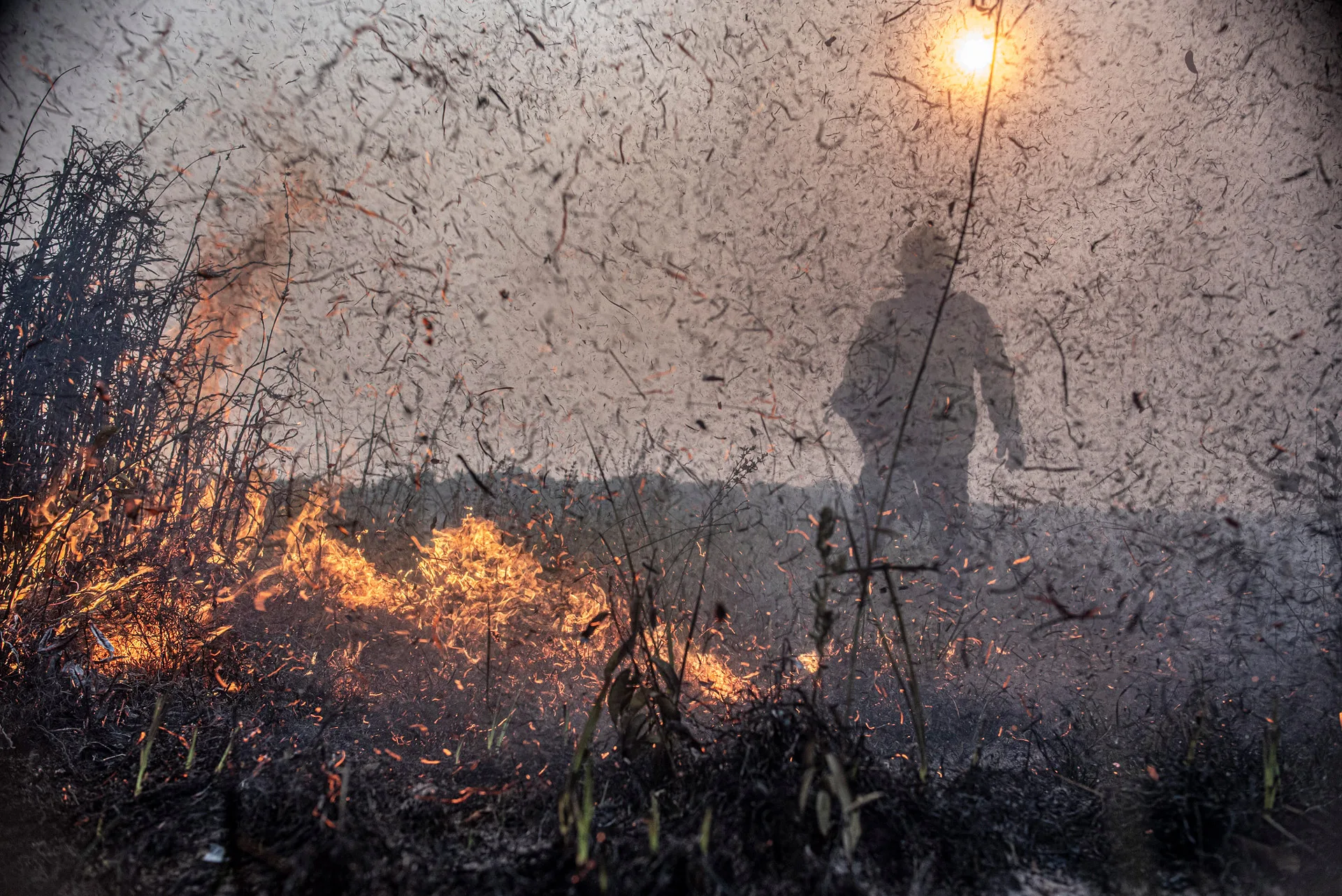
Fires worsened by global heating are also consuming Indigenous territories, where nature’s guardians reside. Photo: Mayangdi Inzaulgarat/Ibama
Report and text: Jaqueline Sordi
Editing: Talita Bedinelli
Photo Editor: Lela Beltrão
Fact-checker: Gustavo Queiroz and Plínio Lopes
Proofreader (Portuguese): Valquíria Della Pozza
English translation: Sarah J. Johnson
Spanish translation: Julieta Sueldo Boedo
Editorial workflow coordination: Viviane Zandonadi
Editor-in-chief: Talita Bedinelli
Editorial director: Eliane Brum

